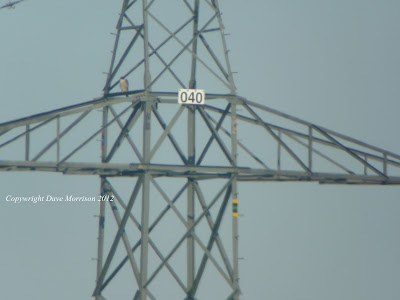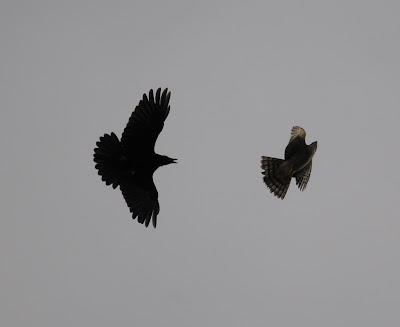December 30th
There are a couple of sites that I monitor that you can watch at all hours without drawing attention to yourself or to the birds, some sites are a little dodgy due to the area in daylight let alone at night in London.
The site I was at this morning are known nocturnal hunters, as I suspect most are in London, I have seen them on other occasions slipping away in darkness.
This site is illuminated by lighting enough so that I can pick out one or both birds on favoured roost spots through Bin’s, again this all depends on the wind direction, this morning was a strong south westerly so I went to the opposite side on arrival.
Arriving at around 5.30a.m I located one bird sitting where I thought he or she would be, in this case size wise it looked good for the Tiercel.When I have watched them before in darkness I have always tried to coincide the night visits with clear skies, the theory being that there would likely be more nocturnal movement by migrants.
Although my wife Christine thinks I am nuts going out in the dark (she has a point) I would really like to do a few all-nighters, the trouble would be staying awake. On this particular site which I watch a lot, I have arrived so many times at dawn and one or both birds are sitting there with full crops. Needless to say they are taking prey at night, I would like to know is this regular every night or just when the opportunity arises?
Nocturnally do they actively go looking for prey within their territory?
Do they just react and wait for flybys that are heard calling or seen visually?
Is nocturnal hunting only confined to urban sites and peregrines only?
If peregrines have the advantage at night, is more than one prey taken?
For the above this may well be true as a couple of years ago on this site, I found 3 freshly taken Redwings all stashed near each other whilst doing a prey collection the day after.
Lots of questions.
Getting back to watching them, nothing happened until 5.54a.m, when I looked for the Tiercel having taken my eyes of him, he was gone. At 6.02am he was back in the same position, he didn’t look like he was going to roost by tucking his head under his wing so I kept watching him.
At 6.08am he suddenly disappeared again, time went by until 6.14am when I got the briefest but positive view of a peregrine coming in to another part of the structure carrying largish prey.
The area he or she had landed on was known as a feeding area, unfortunately this was not illuminated enough and I could not locate any birds. I decided to wait for dawn.
I got the scope out when the light was good enough and had a scan of the area, the Falcon was sitting nearby with a full crop and the Tiercel was feeding on prey, as I watched every so often I got glimpses of a wing, tail or beak as he turned the prey. What I saw was enough to confirm a Woodcock; it was certainly not big enough for a Snipe.
 |
| The same Falcon seen later still showing a large crop |
This now raises more questions, was it luck that I happened on this at this time of night or is there more nocturnal movement in the pre-dawn hours?
All interesting stuff, now that I am in semi-retirement, I will now have the time hopefully to find out.
















































